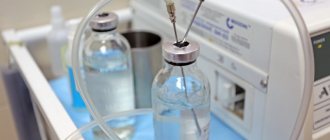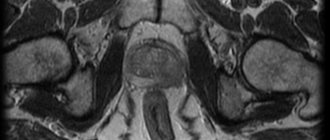Author:
- Sadykhov Rahim Agalarovich
ENT pathology expert
3.63 (Votes: 30)
The sense of smell is a sense that enriches our emotions and is capable of firmly fixing a smell in memory. In everyday life, we do not remember it, taking its presence for granted. Moreover, its loss is the clearest symptom of a number of diseases.
Anosmia (ICD-10 - R43) is a complete loss of smell (a person ceases to feel and distinguish odors). Anosmia is often combined with another symptom – loss of taste (ageusia). This is due to the fact that taste and olfactory receptors are in close cooperation. Anosmia is more common in men. In both sexes it can be a transient condition or persist for a long time.
Impaired sense of smell can lead to serious psychological complexes. A person may think that there is a bad smell coming from him or his things, but he does not feel it. Another situation: loss of smell (anosmia) leads to the fact that danger cannot be recognized in time, for example, a gas leak, the appearance of a burning or smoke smell. For chefs, anosmia can actually cost them their careers.
Causes of anosmia
Until recently, in ENT practice, anosmia was relatively uncommon in a narrow number of patients. But since the beginning of 2021, the situation has changed radically. The reason for this was the new coronavirus infection. This condition is temporary and gradually disappears completely as the structures of the olfactory analyzer are restored. In addition, anosmia occurs with a runny nose (rhinitis) caused by other viruses, opportunistic or pathogenic bacteria. Swelling of the nasal mucosa leads to the blocking of olfactory receptors and disruption of the perception of odors in the periphery.
The causes and treatment of anosmia are closely related. In order to carry out differentiated therapy, it is important to understand why the sense of smell is impaired. Conventionally, there are 2 mechanisms:
- Lesions inside the nasal cavity and pathological processes at the level of olfactory receptors - this can be seasonal allergies, polyps of the nose and paranasal sinuses, respiratory viral infections, prolonged inhalation of toxic substances and prolonged use of vasoconstrictor drops.
- Involvement of the olfactory pathways in the brain in the pathological process - this mechanism is observed in traumatic brain injuries, Alzheimer's disease, multiple sclerosis, infectious brain damage, hypertensive encephalopathy, etc.
Very rarely, anosmia may indicate the presence of a tumor in the brain, nasal cavity or paranasal sinuses, so this symptom cannot be ignored. An otolaryngologist will help you understand the situation; if necessary, other specialists will be involved.
What needs to be done to restore your sense of smell?
Irritate receptors and restore the chain of pathways. Force nerve cells to work, remember their functions. Coffee, lemon balm, mint, and garlic are good for this. Aromatherapy is used with essential oils: clove, citrus, eucalyptus. You need to inhale aromas 5-6 times a day. Irrigation of the nasal cavity with saline solutions will help with swelling of the mucous membrane. It is allowed to use special sprays, even hormonal ones. They should be prescribed by an otorhinolaryngologist, because there are contraindications. A neurologist can prescribe medications that improve the trophism of nervous tissue, including olfactory receptors, and also recommend reflexology.
Unilateral anosmia, bilateral – symptoms
Impaired sense of smell can be combined with the following symptoms:
- memory problems;
- double vision;
- difficulty swallowing;
- speech problems;
- runny nose;
- cough;
- general weakness, etc.
A different combination of symptoms helps the doctor differentiate peripheral (impairments at the level of olfactory receptors and nerve fibers) anosmia from central (associated with brain damage at the level of the olfactory center).
In order to distinguish unilateral from bilateral loss of smell, the doctor performs a special test. The otolaryngologist alternately brings substances with a strong odor (vanilla, coffee, etc.) to one or the other nostril. A special olfactory test kit may also be used.
Survey
Patients with complaints of loss of smell more often consult an otolaryngologist. Since anosmia can be associated with both damage to the upper respiratory tract and brain pathology, a comprehensive diagnosis is carried out. The examination plan includes functional tests, instrumental and laboratory tests, which are aimed at determining the degree of decrease in olfactory sensitivity and identifying the root cause of the symptom. In diagnostic terms, the most informative are:
- Olfactometry.
A qualitative assessment of the ability to distinguish aromas is carried out using a special device - an olfactometer. Using test tubes with different strong odors in combination with performing tests alternately for both nasal passages allows you to detect one- or two-sided reduction in odor perception. Loss of smell on one side is of great diagnostic importance. - ENT examination
. An examination of the paranasal sinuses and upper respiratory tract is carried out to exclude the rhinogenic nature of olfactory disorders. During rhinoscopy, the mucous membrane of the nasal cavity is studied in detail. If purulent discharge is detected, it is collected for further examination. An “adrenaline test” is done to differentiate between catarrhal and hypertrophic rhinitis. - Instrumental inspection
. The standard method is radiography of the skull bones, which is prescribed if traumatic damage to nerve structures is suspected. To exclude sinusitis, X-ray images of the paranasal sinuses are shown. For neurological diseases, a more accurate method is computed tomography; in some cases, MRI of the brain is prescribed. - Laboratory examination
. Nonspecific signs of inflammatory processes are detected using general and biochemical blood tests. If there is nasal discharge, bacteriological culture is performed. Specific, highly sensitive blood tests for toxins and narcotic substances help eliminate poisoning as the cause of loss of smell perception.
After eliminating organic prerequisites for anosmia and physiological age-related changes in the receptor apparatus, additional examination methods are prescribed according to indications - allergy tests, angiography of cerebral vessels. In case of possible functional disorders of smell caused by disturbances in the emotional sphere, consultation with a neurologist or psychiatrist is necessary.
Nasal endoscopy
Features of loss of smell due to coronavirus
What complaint do you think is one of the most common with coronavirus? According to research, this is a loss of smell and taste (ageusia), affecting 3/4 of all sick patients to varying degrees. I note that sometimes this is the most striking, only and lasting symptom. The frequency of anosmia with coronavirus is so high that it is proposed to consider it an indicator of coronavirus at the level of PCR smear analysis. In practice, there are cases when patients become depressed due to six-month anosmia, because imagining a morning without the aroma of freshly brewed coffee or not feeling the taste of food prepared by a loving person is equal to the 4th circle of suffering according to Dante, and no less.
A ray of light in this dark kingdom is the fact that, as a rule, the sense of smell returns in the first month for over 90% of lucky people. It's all about the particularity of the coronavirus damaging ACE2 (angiotensin-converting) and CD147 receptors that support olfactory cells (horizontal basal cells) - roughly speaking, the virus does not affect the receptor itself and the olfactory nerve, but the cells from which new receptor cells are formed to replace the old ones . Thus, there is no renewal of nerve endings - and, as we know, neurogenesis is a very slow process. Fortunately, the olfactory nerve endings are updated from several sources. It is noteworthy that in young people the level of ACE2 proteins is lower than in older people - this may be due to the more aggressive course of LE in the latter. The peculiarity of the loss of smell with CV, unlike other viruses, is that with it there is practically no nasal congestion and discharge from it.
On what day does anosmia appear with coronavirus?
Approximately every 2-3rd patient with Covid experiences anosmia. Usually this symptom appears at the beginning of the disease. Often combined with ageusia.
How long does anosmia last after Covid?
It is generally accepted that this is a temporary condition with a short duration. However, recently there are more and more reports that smell disturbances can persist for quite a long time.
Why don’t everyone who recover from coronavirus infection lose their sense of smell?
Anosmia usually develops on days 4–6 of illness.
By 10–14 days, most people have recovered and the ability to distinguish aromas returns. But for some, the defect remains. You need to understand that any disease cannot occur in the same way in different people. No two organisms are identical, and accordingly, diseases will progress differently. Other significant factors:
- Viral load is the number of microbes that have entered the body. The more, the more severe the disease.
- The virulence of a virus is the strength of its destructive (damaging) effect. Different types and subtypes of coronaviruses vary. Don't forget that viruses mutate and change.
- Immune memory. The more acute respiratory viral infections a person has suffered in his life, the more easily he suffers from coronavirus, the lower the risk of complications.
- Concomitant human diseases: diabetes mellitus, obesity, severe forms of hypertension, respiratory failure. And if these diseases are combined, coronavirus infection is even more severe.
1.General information
The term “anosmia” is translated from ancient Greek as “lack of odors”, i.e. loss of smell. This collective concept summarizes etiologically and clinically heterogeneous conditions in which olfactory sensitivity is completely absent or sharply reduced; for the second case, the narrower terms “hyposmia” or “microsmia” are also provided.
As is known, the ability to detect, distinguish, and identify odors is one of the five basic perceptual functions that ensure human adaptation to external conditions. The loss of any of the five senses is a serious medical and social problem, significantly limiting the quality of life, and in some cases acting as the first symptom of a developing severe pathology.
There are no exact epidemiological data regarding anosmia, since in medical and statistical records this nosological unit is most often absorbed by more general diseases or syndromes, within which it is registered as one of the complications. Most sources classify anosmia as a rare type of pathology, which is disputed by some modern publications, according to which anosmia and especially hyposmia are much more common than previously thought.
A must read! Help with treatment and hospitalization!
4.Treatment
In some cases, anosmia is transient - the sense of smell is spontaneously restored upon completion of the action of the causative factor (such, for example, are many cases of toxic, mechanical, hysterical anosmia). Other forms today remain irreversible and incurable, in particular, idiopathic, congenital or atrophic anosmia. With congenital anosmia, there is a theoretical possibility of (neuro)surgical reconstructive surgery, but such interventions can only be performed in early childhood (up to three to four years) and in practice are carried out extremely rarely, only when absolutely necessary and in the presence of additional indications, since the risk is unacceptable high, and the results are not predictable enough.
In other cases, the prognosis of anosmia directly depends on the success of curing the underlying disease (chronic infection, neuritis, etc.) or eliminating the causes that caused it (removal of polyps, vascular aneurysms, polypous growths).
Reflexology. What is this? How can you use it to restore your sense of smell?
Doctors classify reflexology as physiotherapy.
It improves blood supply, innervation, lymphatic drainage, and promotes well-being. With the help of reflexology, you can restore your sense of smell. This is not a new treatment method; it has been used before. Reflexology helps well in the treatment of allergic rhinitis and even infectious rhinitis. Acupuncture - placement of needles, can be combined with cauterization. Internal organs on the surface of the skin have their own projections, which are called miraculous meridians. The doctor acts on the biologically active points of a certain zone, as a result of which microcirculation and lymph flow improve, swelling is eliminated, and the sense of smell improves. By restoring the circulation of energy according to ancient Chinese teachings, we restore health. Information for you was prepared by: neurologist Lyudmila Vasilievna Lebedeva, reflexologist. Conducts receptions in the clinic building on Novoslobodskaya.
Olfaction: the mechanism of sensitivity to odors
A group of sensitive cells that are located in the superior turbinate and the adjacent area of the nasal septum . Molecules of substances from the inhaled air, dissolved in nasal mucus, fall on the cilia of these cells. A separate pair of cranial nerves is responsible for carrying signals from such receptor cells to the brain.
The complete loss of the ability to smell is called " anosmia ". If this ability is weakened, then the condition is called " hyposmia ". The sense of smell may become less acute if a strong odor is present for a long enough time - adaptation to the smell occurs. Restoration of high sensitivity of smell occurs seconds or minutes after the cessation of exposure to the smell. As you get older, your sense of smell may become slightly dull. Women tend to be more sensitive to odors than men.
Types of smell impairment
The sense of smell can change pathologically in three ways:
- Decreased sense of smell.
- Increased sense of smell.
- Perversion of smell.
Decreased sense of smell
This type includes:
- Hyposmia is a decreased ability to smell.
- Anosmia is the complete inability to smell.
Increased sense of smell
This condition is called hyperosmia - a painful exacerbation of the sense of smell.
Perversion of smell
This type of pathology includes:
- Parosmia is a distortion of the normal perception of smells. For example, instead of smelling chocolate, you smell rotting food.
- Phantosmia (olfactory hallucinations) is the sensation of a smell that is not there. It has nothing to do with real existing objects.
- Cacosmia - rolling attacks of sensation of unpleasant, disgusting odors.
All these types of smell disorders occur after coronavirus.
Is this treatable?
In some cases, in order to return a person to the opportunity to enjoy all the variety of smells, it is enough to eliminate the reason why the nose began to “work incorrectly.” The simplest case is inflammatory processes. As a rule, they are short-term, and properly selected treatment helps restore all impaired functions.
If the inflammation is chronic, it needs to be taken especially seriously: under no circumstances put off visiting a doctor if a runny nose and swelling in the nasal area have been interfering with your life for more than a week. Polyps and tumors in the nose can also lead to loss of smell, but, as a rule, after surgical treatment the ability to distinguish odors is restored.
It is much more difficult to restore the sense of smell if the cause is disturbances in the functioning of the receptors, the consequences of injuries or pathologies in the development of the nasal passages. In this case, the main thing is to try to support the mucous membrane as much as possible and try to return it to its normal state. Quit smoking and stop drinking alcohol - these bad habits lead to changes in the mucous membranes, which can become chronic.










